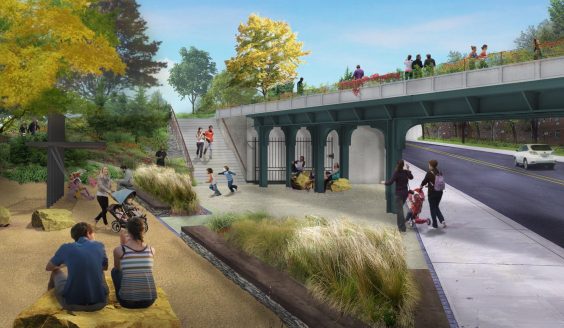
Earlier this week, 12 senators, led by Tom Harkin (D-IA), introduced the Complete Streets Act of 2011 (S.1056), a companion to the House bill we reported on a few weeks back. The purpose of the bills is to push states and metropolitan planning organizations to fully consider incorporating pedestrian and bicycle safety measures when roads are built or reconstructed.
Like the House version, the Senate bill would require states and MPOs to craft and adhere to complete streets policies. It goes further than the House bill, however, in that it also requires agencies to consider cyclists, pedestrians, and transit when building roads with federal funds. Both bills have been weakened from a previous incarnation, however — they no longer carry penalties for noncompliance.
Complete streets are streets with safe places for everyone, whether they’re in a car, on foot, on a bicycle, or riding transit. Some “street treatments” that are used to make streets more complete are sidewalks, bike lanes, special bus lanes, comfortable and accessible public transportation stops, frequent and safe crossing opportunities, median islands, accessible pedestrian signals, curb extensions, narrower travel lanes, and roundabouts, just to name a few.
Twenty-five states and more than 200 local jurisdictions have adopted Complete Streets policies. Every state except Maine, Nevada, Alaska and South Dakota has at least one city or town that has enacted a Complete Streets policy, according to a recent report [PDF]. According to the National Complete Streets Coalition:
The power of the Complete Streets movement is that it fundamentally redefines what a street is intended to do, what goals a transportation agency is going to meet, and how the community will spend its transportation money. It breaks down the traditional separation of “highways,” “transit,” and “biking/walking,” and instead focuses on the desired outcome of a transportation system that supports safe use of the roadway for everyone, by whatever means they are traveling.





